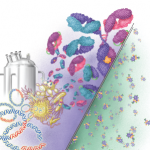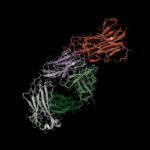Rare adverse events could occur, and “we have to have good registries and surveillance to pick those up,” Dr. Isaacs said. “[Registries] are critical to understand the long-term safety and efficacy [of biosimilars].”
Switching, substitution and interchangeability: Clinicians are now able to switch from the originator to a biosimilar, he noted, “and I think many of us are increasingly doing that.” But physicians are “responsible at the end of the day if something goes wrong.”
Dr. Isaacs said that there is talk about substitution of a biosimilar for a prescribed biologic, which could raise the prospect of a pharmacist changing a prescription from an originator to a biosimilar.
No biosimilars have yet been classified as interchangeable, and the ACR is advocating for a notification requirement in potential regulation and legislation.
Naming: Dr. Isaacs pointed out that the name of a drug comes with a connotation, and questions linger about how to refer to these drugs. In the U.S., biosimilars are given a suffix to distinguish them from the original drug. “In a sense, this implies noninterchangeability because these are different INNs (international nonproprietary names),” he said.
In Europe, the original drug and the biosimilar share the same INN, which “may inappropriately suggest interchangeability, because, for example, Remicade and Inflectra are both called infliximab.” He said it is now necessary for him to prescribe biologics by brand name to clearly identify the drug that he is prescribing.
Indication extrapolation: This involves the question of whether, once a biosimilar is approved for one indication, it should then be approved for other indications for which the originator drug is approved. It’s a “slightly controversial” topic, he said.
In 2014, an infliximab biosimilar was not approved in Canada for the treatment of Crohn’s disease even though it was approved for rheumatoid arthritis (RA), because of questions surrounding antibody-dependent cellular toxicity (ADCC) and the clinical importance of ADCC in Crohn’s as opposed to RA.
Dr. Isaacs said that the idea of variability from drug to drug and batch to batch is not new and is not confined to biosimilars, noting that there have been changes in all biological drugs over the years.
“Remicade’s gone through 35 changes during its lifecycle—not all big changes, but nonetheless changes,” he said. “So in terms of biosimilars, this kind of realization has reassured me that what we use today, even with the bio-originator, is probably not what we were using 10 or 20 years ago. That’s something to reflect on.”



